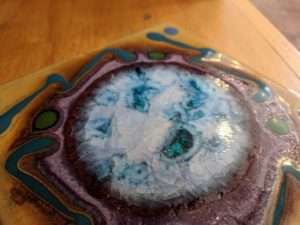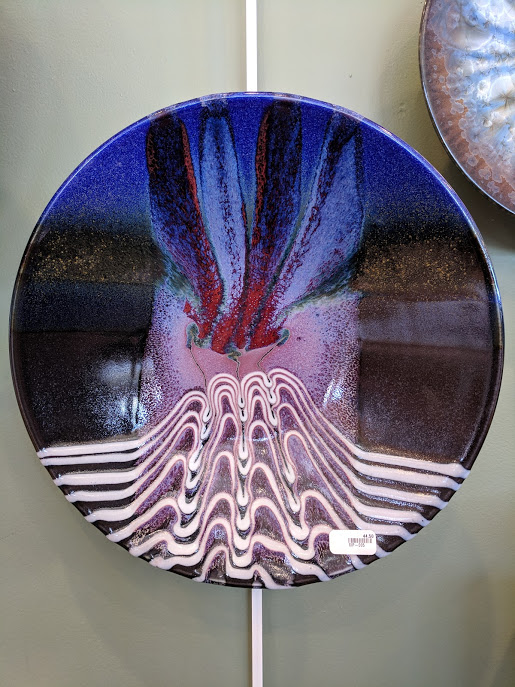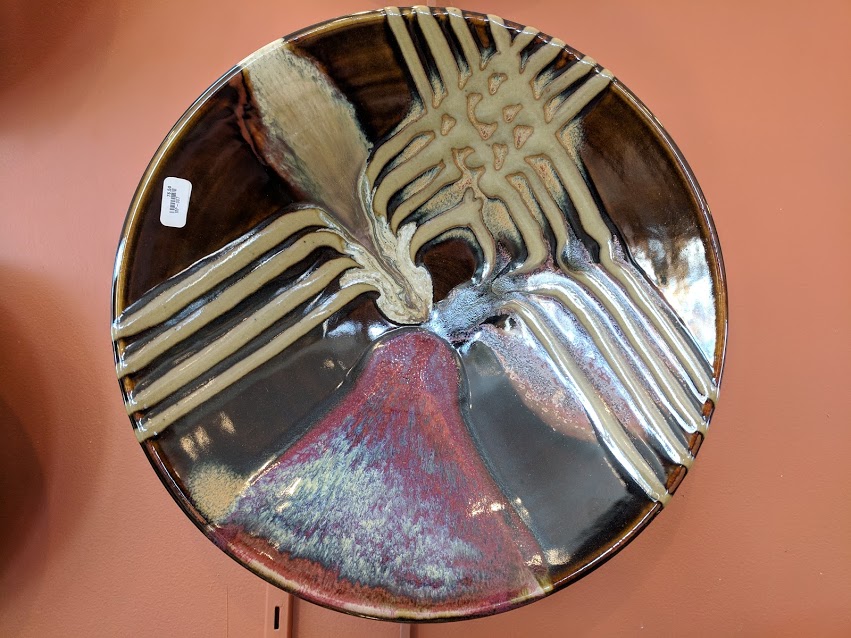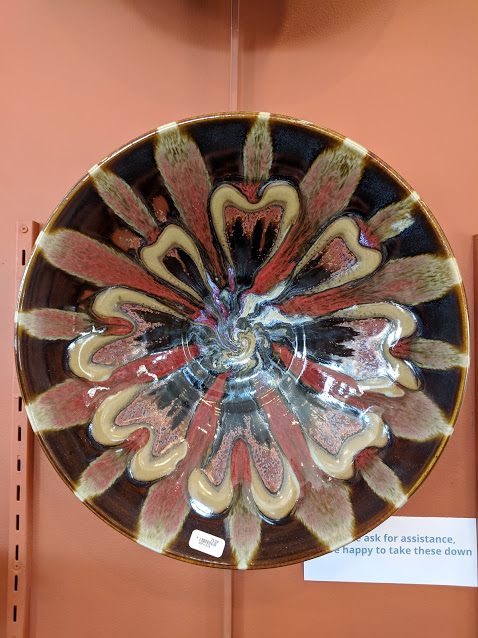I am new to the Gallery team, and to the world of pottery in general. I have been spending some time exploring the gallery and reading about artists to gain a better understanding of them, their artwork, and the techniques they use to create it. It is important for me to understand these things so I can better explain to you, our customers, what we offer here at the Clay Coyote. Over the course of the next few weeks, I have decided to write some profiles about a few artists that have interested me in the Gallery.
The first of these artists I want to highlight is Matthew Patton. I was drawn to his work because of the beautiful, unique glazes on his pieces. In particular, the pieces pictured below caught my eye.
I wanted to learn more about what inspires his work, the process behind it, and more about the man himself.
As I dug deeper, I learned that he was born in 1951 and has been a resident of the Seattle area since 1964. He studied at the University of Washington and Central Washington State College BFA Programs. In 1981, Patton began working as a studio potter and currently works out of a private studio in Seattle. He creates his art either on the wheel or through slab construction using porcelain and stoneware.
Patton’s work can be found in many galleries in the Pacific Northwest, as well as the Southwestern United States, the East Coast, and here at the Clay Coyote. He has received awards from and has juried numerous art shows in the United States, as well as one in Australia in 2001.
His bowls and plates are highly decorative, and have an emphasis on the glaze effects that I was drawn to. This emphasis allows great variety in his pieces. As Matthew Kangas described in an article profiling Patton for the April 1990 issue of Ceramics Monthly, his pieces can “evoke sunsets over desert horizons” or “use strict geometric grids set at diagonal angles to one another.”
 Starting out, he would make plates simply “to have a surface to glaze.” It just so happened that they had practical, food friendly uses as well. His work has evolved to include purely decorative pieces, such as tiles. This evolution away from functionality has, in his own words, given him “a new freedom.” It has also started a kind of metamorphosis from being a potter to a sculptor.
Starting out, he would make plates simply “to have a surface to glaze.” It just so happened that they had practical, food friendly uses as well. His work has evolved to include purely decorative pieces, such as tiles. This evolution away from functionality has, in his own words, given him “a new freedom.” It has also started a kind of metamorphosis from being a potter to a sculptor.
Even he is not quite sure where he falls, but it is clear that his work does not suffer due to this lack of a label.
To see more of Matthew’s work, visit our Gallery or Online Shop.



